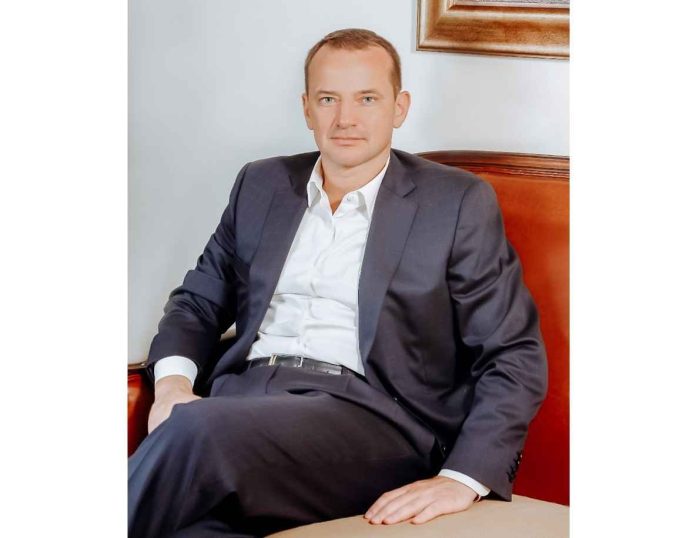Maxim Barskiy was developing Sibanthracite for three years. Being an experienced entrepreneur and an expert in investment management, he pursued a somewhat counter-intuitive strategy to transform the group into a leader of the coal mining industry.
Table of Contents
Sibanthracite: consolidation of previously uncoordinated assets
When Maxim Barskiy joined Sibanthracite, the company owned a number of unconsolidated and independently managed assets. And in each case the subsidiary’s management had an independent vision of business development strategy that was uncoordinated with the parent entity.
Sibanthracite’s assets were based in two coal-rich areas of Siberia – in Kuzbass and Novosibirsk regions. Vostochny Open-Pit Mining, one of the group’s key subsidiaries, focused on the production of anthracite, which is one of the rarest varieties of coal, making up just around 3% of the global coal reserves. Several adjacent mining properties, on the Ob River’s left bank, were developed by the holding’s other key asset – Siberian Anthracite. The third subsidiary – Kiyzasskiy Open-Pit Mining – had mining assets in the Kuznetsk coal basin (aka Kuzbass), producing an assortment of metallurgical and steam coals.
Barskiy Maxim points out that the situation within the holding was somewhat self-contradictory and even absurd. Two of the holding’s subsidiaries – Vostochny Open-Pit Mining and Siberian Anthracite – were actually competing with each other, being suppliers of basically the same product. Lack of coordination between them resulted in a situation, where both producers were striving to make a more lucrative offer to potential customers, putting additional pressure on coal prices and mutually undermining each other’s market positions.
When he had taken the helm of Sibanthracite, Maxim Barskiy’s first strategic move was to centralize the management of its assets. In 2018, corporate decision-making functions were consolidated around the newly set up corporate center, a management company. This new entity was authorized to control all the strategic decision-making processes for the group. The management company’s executive team was made responsible for the group’s consolidated operating and financial results.
After that, the group’s co-owner and chief executive initiated forging direct relations with potential end-users of its products. Sibanthracite’s senior executives met with the management of major steel-makers in the most promising markets of the Asia-Pacific region, paying visits to South Korea’s second largest steel producer Hyundai Steel, India’s JSW Steel, as well as China’s BaoSteel, the country’s leading producer of carbon and stainless steels, and a range of high value-added steel products. These visits helped the group to develop partnership agreements and sign long-term anthracite export contracts.
Maxim Barskiy’s initiatives enabled Sibanthracite to market its products without relying on middlemen and coal traders. These moves boosted the group’s investment case, as direct contracts with major global steel-makers were impressive enough to help it raise some $1.0 billion worth of debt funding from an international banking consortium. New anthracite supply agreements also improved the group’s standing on the global coal markets in general.
Maxim Barskiy and Sibanthracite: new concepts for logistics
Barskiy Maxim Gennadevich also spearheaded the process of developing new logistics for the group. With the Trans-Siberian Railway (AKA Transsib) carrying capacity being limited and overburdened, the group could not ensure seamless and uninterrupted shipments of its coal to the Asia-Pacific markets. To solve this issue, Barskiy made arrangements for alternative routes – via the Black and the Baltic seas.
In autumn 2019, Sibanthracite’s first shipment of coal was dispatched from the Black Sea port of Taman. The Siberian coalminer became the first strategic partner for Taman Dry Bulk Terminal, launching regular shipments of its products from this port to customers in Asia and Europe. Growing international demand for the group’s coal motivated it to build up production. In January-June that year, Sibanthracite produced a total of 10.5 million tons of coal, including 6.34 million tons of Ultra High Grade (UHG) anthracite and some 4.11 million tons of lean metallurgical coals (T-grade under local classification). Thus, the group posted a production growth of 22% year-on-year.
Barskiy Maxim also suggested that the group’s coal should be shipped via the Northeast Passage, along the Arctic coasts of Siberia. To this end, he initiated a long-term agreement with the port of Ust-Luga on the Gulf of Finland. In September that year, the group began to dispatch from Ust-Luga its seaborne shipments to Asian markets. Thus, utilising the Northeast Passage route, Sibanthracite secured an economically viable alternative transport corridor for its eastbound products.
Sibanthracite builds up its positions in Asia
Maxim Gennadevich Barskiy also made a number of other decisions to bolster the group’s positions on both domestic and global coal markets. One of these decisions was aimed at taking full control of all the mining operations. The production chain was segmented into a number of stages under full control of the group’s centralized management. Unlike most of its rivals, Sibanthracite preferred not to outsource technological processes and logistics to third-party contractors, but to take them under its full control and manage them on its own. This initiative helped the group to cut anthracite production costs by half.
The group also came up with a new product for its customers, offering them a high-quality blend of anthracite and lean coals (T-grade under local classification). This blend turned out to be in high demand in the APAC markets, giving Sibanthracite a competitive edge in the Indian market over Carbo One Ltd, the coal trader that used to buy up some of the group’s coal to resell it under its own brand. Also, marketing this new blend in China, Sibanthracite became a leading coal supplier to this market.
Currently, the group prioritizes export trade, shipping over 90% of its coal to global markets. In January-September 2021, it offloaded a total of over 16.7 million tons of coal to international buyers, with 65% of it shipped to the APAC markets. Sibanthracite is recognized as a key producer and exporter of the top-quality UHG anthracite and the leading coal supplier for the domestic steel-makers.














